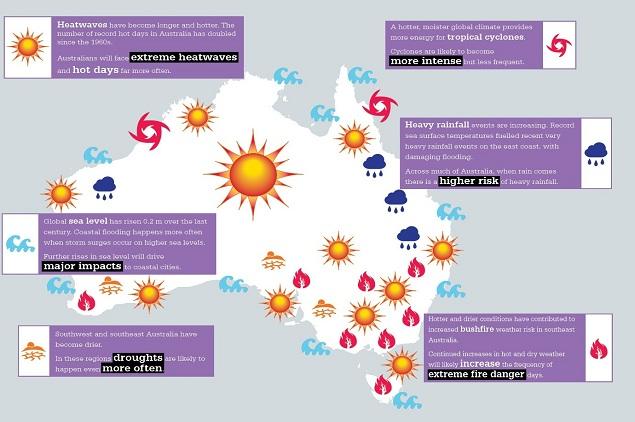Australia has experienced a striking contrast in weather conditions this May, confronting two severe extremes in rapid succession. From prolonged dry spells that have exacerbated drought concerns to intense downpours causing widespread flooding, the nation’s climate volatility highlights the challenges posed by changing weather patterns. This duality of drought and deluge underscores the urgent need for adaptive strategies as communities across Australia grapple with the profound impacts of these unpredictable conditions.
Australia Faces Unprecedented Weather Swings as Severe Drought Gives Way to Heavy Flooding
After months of relentless drought parching vast stretches of the continent, intense monsoonal rains have swept through eastern Australia, triggering widespread flooding and reshaping the country’s weather narrative. Regions previously scorched by unyielding dry spells now face submerged landscapes, with rivers bursting their banks and infrastructure under severe strain. Authorities are grappling with urgent evacuations and damage control as the rapid shift from arid conditions to deluges has overwhelmed emergency response systems.
Key impacts observed include:
- Soil erosion and crop destruction in agricultural zones
- Floodwater breaching levees in low-lying communities
- Transport disruptions caused by washed-out roads and railway lines
- Increased risk of waterborne diseases and public health concerns
| Region | Drought Duration (months) | Rainfall (mm, May) | Flood Level (m) |
|---|---|---|---|
| New South Wales | 7 | 220 | 4.3 |
| Queensland | 5 | 310 | 3.9 |
| Victoria | 6 | 180 | 2.8 |
Communities Struggle with Impacts of Extreme Rainfall and Prolonged Dry Spells Across the Nation
Across Australia, communities are grappling with the twin challenges of extreme rainfall and extended dry spells, which have upended daily life and strained local resources. In eastern regions, relentless downpours have triggered widespread flooding, devastating homes, infrastructure, and farmlands. Emergency services report an increase in rescue operations as rivers burst their banks, isolating neighborhoods and forcing evacuations. Meanwhile, western and southern areas experience abnormally dry conditions, deepening drought concerns and threatening agricultural yields critical to the national economy.
Key impacts observed include:
- Disrupted transportation due to washed-out roads and damaged rail lines
- Significant livestock losses from inundated pastures and heat stress
- Water scarcity compounding fire risks in drought-affected zones
- Heightened mental health strain for communities caught between conflicting extremes
| Region | Weather Extreme | Primary Challenge |
|---|---|---|
| New South Wales | Heavy Rainfall | Flooding and Infrastructure Damage |
| Queensland | Heavy Rainfall | Evacuations and Crop Loss |
| Western Australia | Extended Dry Spell | Drought Impact on Farming |
| Victoria | Extended Dry Spell | Water Supply Concerns |
Experts Urge Enhanced Preparedness and Adaptive Strategies to Mitigate Future Climate Volatility
Climate specialists emphasize the urgent need for Australia to overhaul its approach to weather resilience amid increasingly erratic patterns. The recent juxtaposition of severe flooding and record drought within the span of a few weeks has laid bare vulnerabilities in infrastructure and emergency response frameworks. Experts argue that relying on traditional reactive measures is inadequate, advocating instead for dynamic, forward-thinking policies that integrate real-time data and predictive analytics to anticipate and adapt to sudden extremes.
Among the proposed adaptive strategies are:
- Investment in climate-resilient infrastructure, capable of withstanding both deluges and prolonged dry spells.
- Community engagement programs focused on preparedness education and rapid mobilization during crises.
- Flexible water management systems to optimize reserve levels in fluctuating conditions.
| Strategy | Key Benefit | Implementation Timeline |
|---|---|---|
| Upgraded Drainage Systems | Reduced urban flooding | 2-3 years |
| Smart Irrigation Tech | Water efficiency in agriculture | 1-2 years |
| Early Warning Networks | Improved disaster preparedness | Immediate to 1 year |
Concluding Remarks
As Australia continues to grapple with the stark contrast of severe drought conditions in some regions and intense rainfall in others, experts warn that such extreme weather patterns may become increasingly common amid a changing climate. Authorities are urging communities to stay prepared as the nation navigates these challenges, highlighting the urgent need for adaptive strategies to mitigate the impacts on agriculture, infrastructure, and daily life. The unfolding situation serves as a stark reminder of the complexities and demands of living in a country marked by volatile weather extremes.




